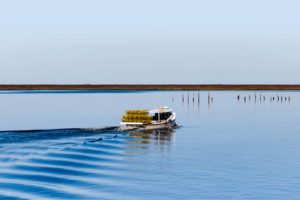CLA Win: Assisting with Passage of Bills Enhancing the Impact of Bay Restoration Funds HB0507 / SB0119
By Evan Isaacson, Director of Policy & Research
CLA staff and a volunteer attorney (and board member) assisted the Chesapeake Bay Commission and its Maryland members, including Delegate Stein and Senators Elfreth and Guzzone, in drafting and developing the Clean Water Commerce Act (CWCA) of 2021. This significant new legislation reauthorizes, modifies, and doubles in size the existing CWCA program through June 30, 2030, and requires the Department of the Environment (“MDE”) to dedicate $20 million annually from the state’s Bay Restoration Fund for specific water quality improvement projects. Under the heavily altered CWCA statute, which was originally established in 2017, MDE is now required to purchase “environmental outcomes” delivered through the establishment of high-value pollution control projects designed to provide the biggest “bang for the buck” in order to help Maryland reach the Chesapeake Bay cleanup goal while also maximizing other co-benefits beyond the reduction of nitrogen pollution.
The way that this legislation accomplishes these twin goals is through the establishment of set-asides for portions of the annual $20 million fund in order to stimulate investment in certain priority uses such as (1) agricultural pollution reduction practices, with priority given to certain types of projects; (2) projects established in communities disproportionately burdened by pollution and dealing with a history of environmental injustices; and (3) landscape restoration projects with long-term and durable pollution controls. In awarding contracts, MDE must also prioritize projects that provide co-benefits beyond water quality improvements, including climate change and environmental justice.
Why it Matters: Maryland is at risk of not reaching its 2025 Bay cleanup goals. The Chesapeake Bay Commission recognized that reauthorizing and revamping the CWCA program could provide a major boost for this effort, especially with an infusion of additional funds. The CWCA was originally designed to purchase the most cost-effective nitrogen pollution reductions in order to allow limited state funds to be stretched as far as possible toward that 2025 goal. However, to date, the CWCA program was achieving the opposite outcome. The CWCA had attracted little interest from ecosystem restoration contractors, and without a competitive market of active bidders, the price per pound of nitrogen removed has been far too high to make a difference. The program did not stimulate innovative new pollution control projects nor did it provide large-scale reductions from the sectors and areas of the state where these reductions were needed most.
The new legislation doubles the size of the CWCA program, establishes new incentives to drive down price and scale-up pollution reductions, and – importantly – provides protections that level the playing field for projects of different types in different areas and for communities that typically would not be prioritized for environmental and public health investments. For example, if an urban stormwater pollution control project that would benefit a community suffering from a history of environmental injustice costs ten times more on a nitrogen reduction basis compared with a project in a rural setting, the urban project would never be funded under the current CWCA program; the only benefit the law previously recognized is the reduction of nitrogen. This is an unfair and inefficient approach to Bay restoration. But now, by requiring the CWCA to recognize a myriad of benefits and set aside funds for projects of certain types, the state has helped to maximize the delivery of co-benefits along with nitrogen reductions for the Bay. No one goes to the store to buy a landline phone, camera, camcorder, calculator, flashlight, and video game device – they buy a smart phone. In this same way, Maryland’s approach to Bay restoration just got that much more intelligent and efficient by no longer focusing exclusively and obsessively on nitrogen and factoring in the ability of projects to deliver many different benefits at once.
This is a groundbreaking approach that puts Maryland in a much better situation to reach its Bay nutrient pollution goal while also stimulating investment in pollution control projects of many kinds that deliver benefits of all kinds, including those discussed in the 2014 Chesapeake Bay Watershed Agreement. CLA is proud to have been a partner in this effort and is eager to continue providing education to partners, pollution reduction providers, and the public on how to implement the bill successfully.





